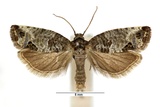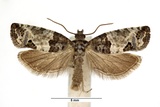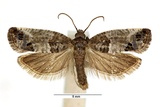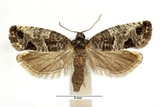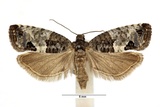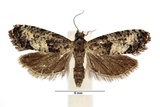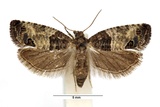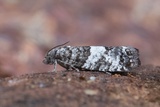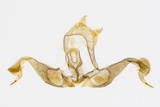Spilonota laricana (Heinemann, 1863) Species
Last modified: Nov. 24, 2025, 7:20 p.m.
A rather common species throughout Belgium.
Details
- Classification
- Family: Tortricidae > Subfamily: Olethreutinae > Tribus: Eucosmini > Genus: Spilonota > Species: Spilonota laricana
- Vernacular names
- Bonte lariksbladroller (NL), Larch Bud Moth (EN), Lärchen-Knospenwickler (DE)
- First mention in Belgium
- De Crombrugghe G. 1898. Note sur quelques Lépidoptères nouveaux pour la faune belge. — Annales de la Société Entomologique de Belgique 42: 34–38. On page 35.
- Status
-
Native
Distribution
Imago
Wingspan 12–17 mm. It has previously been regarded as a form of Spilonota ocellana.
The basal area, triangular pretornal mark and termen are all marked dark. The ocellus is extensively black dashed and suffused grey. A dark suffusion from the costa at one half.
This species can be similar to Spilonota ocellana but S. laricana has a more irregular outer edge to the basal patch, more extensive grey suffusion in the costal half and ocellus, the black dashes in the ocellus are more extensive and the costal suffusion at one half more prominent.
When dark forms of Spilonota ocellana occur the paler areas of the wing are all darkened where-as S. laricana retains the pale dorsal central area.
Caterpillar
Greyish brown body with blackish-brown head, dark patterned and black prothoracic plate, sternum brown, tail comb same as body color.
Bionomics
The larva feeds at first between some needles spun together. After hibernation it feeds in the expanding buds. Pupation in the larval feeding place.
The adults come to light.
Flight periods
The adult have been observed from late May till late October. Most observations during June/July.
Habitat
It inhabits plantations and woodlands with larch.
